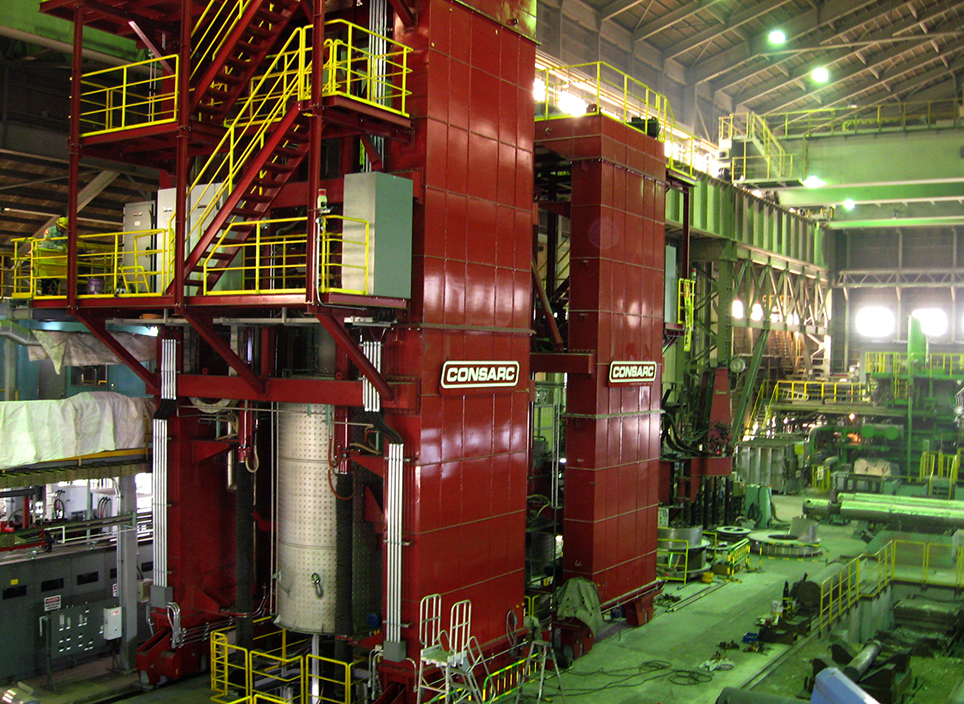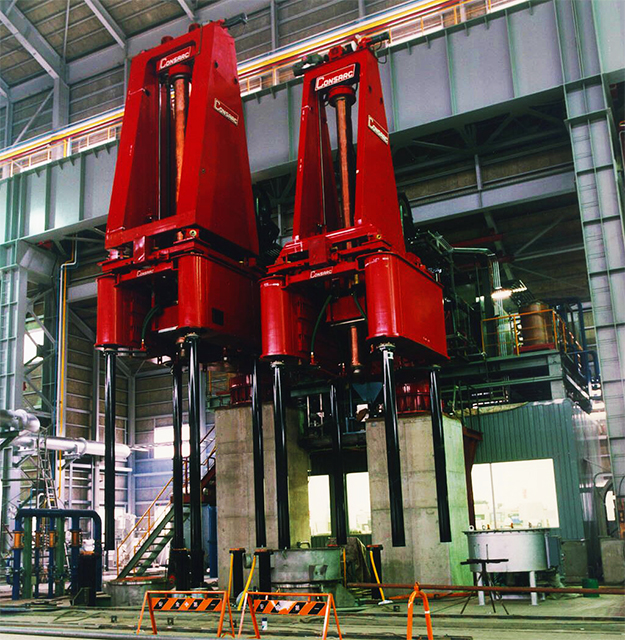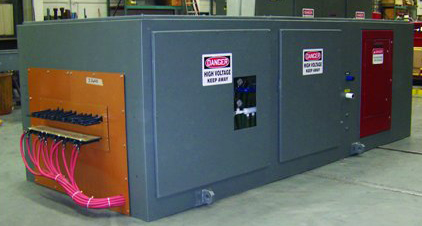
Multiple Electrode ElectroSlag Remelting Furnaces

Consarc electrode eschange ESR furnaces utilize multiple electrodes, one at a time in series, to form a single larger ingot. Electrode exchange furnaces always utilize two ESR furnace heads, and can be designed to exchange into either a static melt station or a withdrawal melt station that is located between the two heads.
Frequently these furnaces will have one or two “side” melting stations as well, which can allow for higher productivity when melting more standard product in a single electrode to single ingot configuration.
Features
- Fully coaxial
- Precision electrode drive
- Fully automated melt control
- X-Y electrode centering
- Inert gas melting capable
- Dry air melting capable
- Slab ingot capable
- Dry slag starting capable
- Liquid slag starting available
- Purpose designed AC power supplies
Tech Specs
Product sizing:
Electrode exchange ESR furnaces are custom designed to the customer’s requirements regarding their electrode sizing, leading to a wide variety in product sizing.
Dry or Liquid Slag Start Capable:
Most ESR furnaces today are started “cold” with dry prefused slag. Consarc can also provide a slag melting furnace with the ESR system that gives “hot” (liquid) slag start capability. This is most useful in situations where humidity and moisture are concerns, as well as in locations where sourcing of prefused slag is problematic.
Purpose Designed AC Power Supplies:
Consarc is the only ESR furnace supplier that designs and builds our own power supplies. These units are specifically designed to meet the demanding requirements of the ESR melting application. This provides Consarc ESR customers with a single source responsibility for the complete ESR and power transmission system.
Inert Gas Melting System:
Today many Oxygen and Nitrogen sensitive alloys are melted under an inert gas atmosphere. The major benefits of the Inert Gas Melting System are:
• Helps improve control Oxygen and Nitrogen levels in the final ingot compared to melting in air or dry air
• The system is fully enclosed, preventing the possibility of contamination from the melt shop during melting
• Different slags can be used because the oxidation of the slag is no longer a concern
• Minimal to no deoxidant is required; deoxidant can be a principal source of inclusions in ESR ingots.
• Alloys requiring higher nitrogen levels can be remelted in an inert gas atmosphere that includes a higher percentage of nitrogen, reducing the outgassing of that element from the alloy



